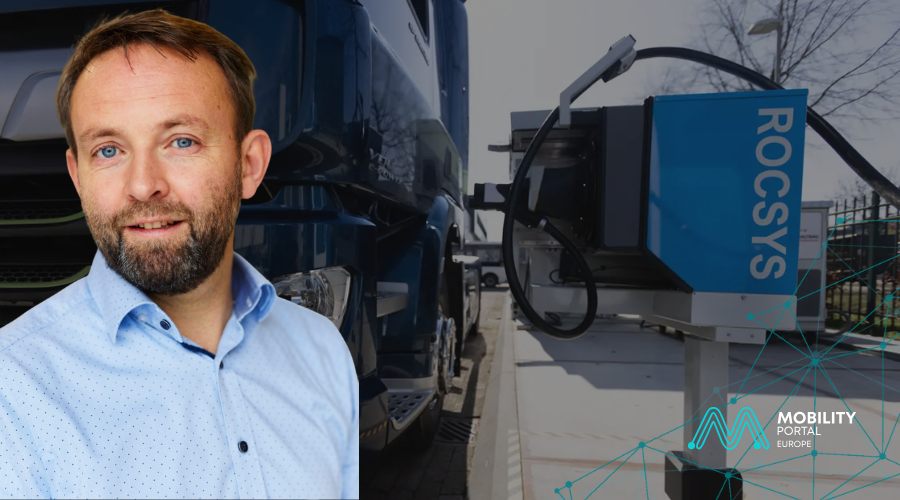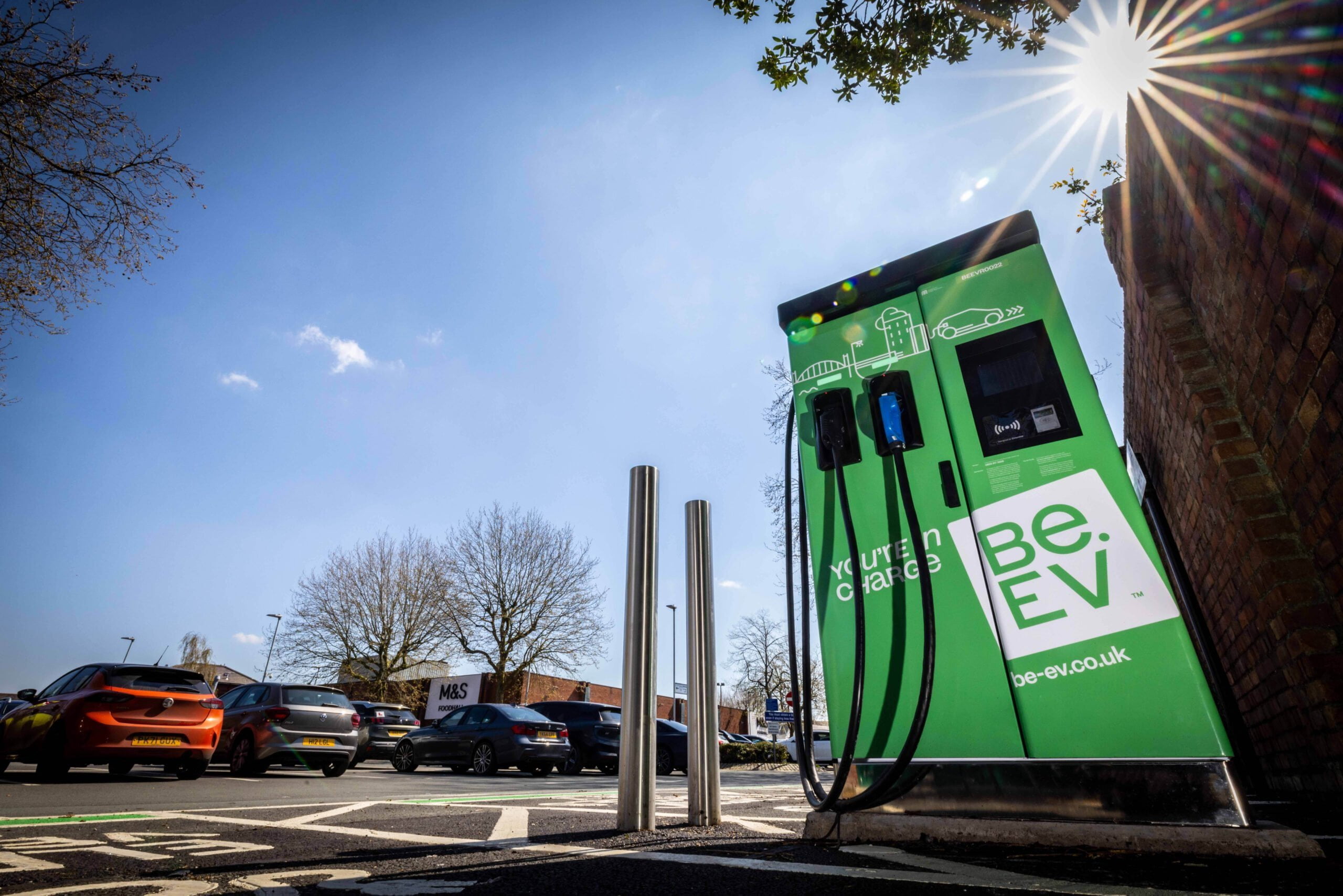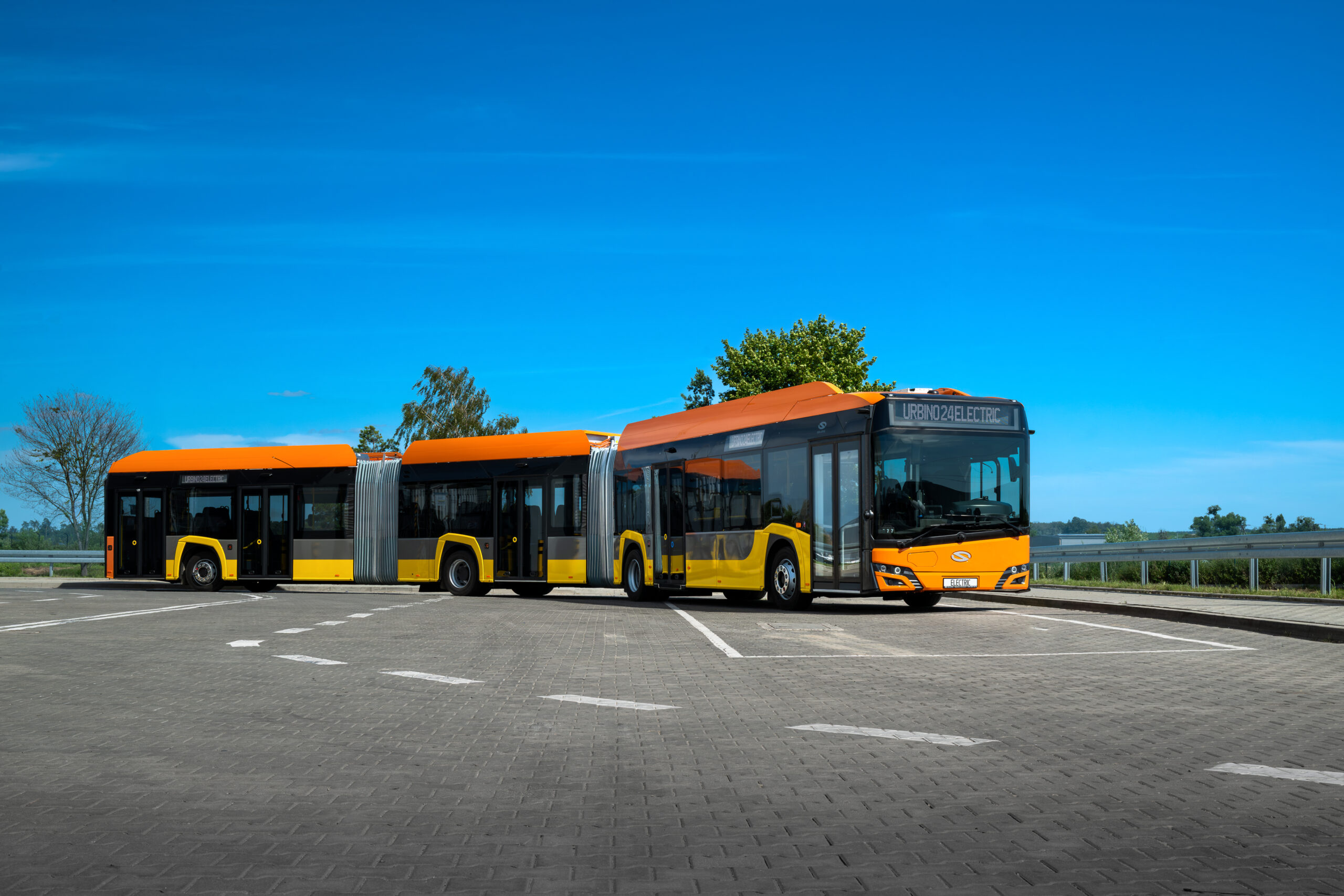Manual charging was the final bottleneck preventing the complete automation of transport.
Rocsys, with its hands-free charging system, successfully eliminated this barrier in key sectors such as ports, logistics, and robotaxis.
“If vehicles are to be automated, charging must follow suit,” asserts Crijn Bouman, CEO and co-founder of Rocsys, in an interview with Mobility Portal Europe.
His previous experience at Epyon, a fast-charging company later acquired by ABB, led him to identify an unresolved issue in the advancement of automation: driverless vehicles still relied on human intervention for recharging.
Six years ago, Rocsys was established to bridge this gap.
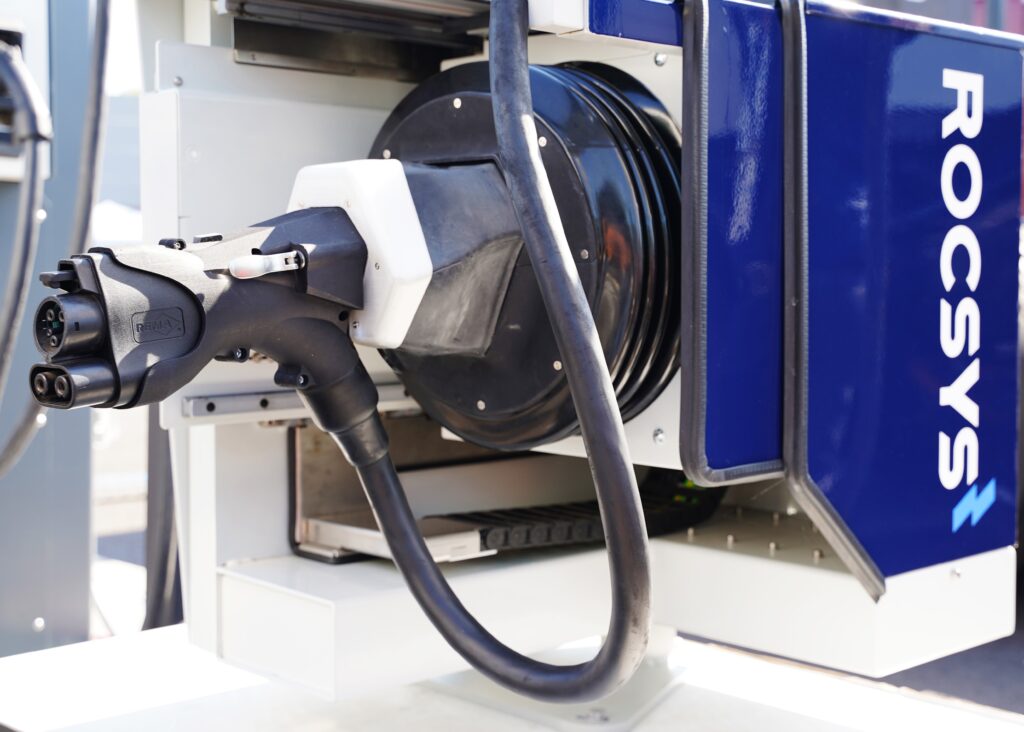
Its solution requires no modifications to either the charger or the car.
The system employs computer vision and artificial intelligence to detect and pinpoint the vehicle’s charging port, determine the optimal way to access it, open the cover, and accurately connect the plug.
“Essentially, any commercially available charger can be adapted with our solution to automate the charging process,” explains Bouman.
The system is compatible with any direct current (DC) charging unit, with power levels ranging from 50 to 400 kilowatts.
And that is not all.
The company is also exploring the automation of megawatt charging systems (MCS).
Its primary clientele consists of industrial and commercial fleets, particularly in ports and logistics hubs, where automated vehicles are already in operation.
For fleet operators, the objective is clear: maximising car uptime.
According to Bouman, automated charging eliminates a significant hurdle in the operation of autonomous electric vehicles (EVs).
“We ensure the EV is ready when needed, without requiring personnel to oversee the recharging process,” he elaborates.
The most extensive roll-out of this technology is currently underway at APM Terminals Maasvlakte II, one of the world’s most advanced container terminals, located in the Port of Rotterdam.
This project, involving an investment exceeding 1 billion euros, aims to double the terminal’s capacity to 5.4 million TEU per year.
At this facility, 30 autonomous electric trucks from Terberg will operate without human intervention, thanks to Rocsys’ hands-free charging technology.
“The charging process is expected to take approximately one hour, with a power level of above 100 kW,” Bouman details.
The infrastructure will feature six automated charging bays, monitored in real-time via the Rocsys Portal supervision platform.
To ensure an optimal level of service, the company maintains a reliability rate of 99.9%, supported by a 24/7 remote assistance system, called Rocsys Proactive Care.
“If a vehicle is unavailable when required, the fleet operator incurs financial losses,” Bouman highlights, underlining the importance of uninterrupted operations.
Within this framework, cybersecurity is a crucial aspect of automated charging infrastructure.
Rocsys adheres to ISO regulations in this field and implements remote software updates to safeguard its systems.
Furthermore, it has a dedicated security committee that continuously monitors potential vulnerabilities.
From a regulatory perspective, automated charging currently lacks specific legislation, but IEC and ISO standards for robotic charging are expected to be published before the end of the year.
This certification will facilitate, among other benefits, the adoption of the technology in public spaces and unlock new market opportunities.
How does Rocsys overcome potential technical challenges?
Automated charging faces several hurdles, particularly in adverse weather conditions.
To address this, Rocsys developed a system based on computer vision and artificial intelligence that enables precise connection of the charging plug to the vehicle, even in heavy rain, snowfall, or extreme sunlight.
One unexpected challenge encountered by the company was the interference of external elements, such as cobwebs on sensor cameras.
Such incidents have driven continuous improvements to the system, further enhancing product reliability.
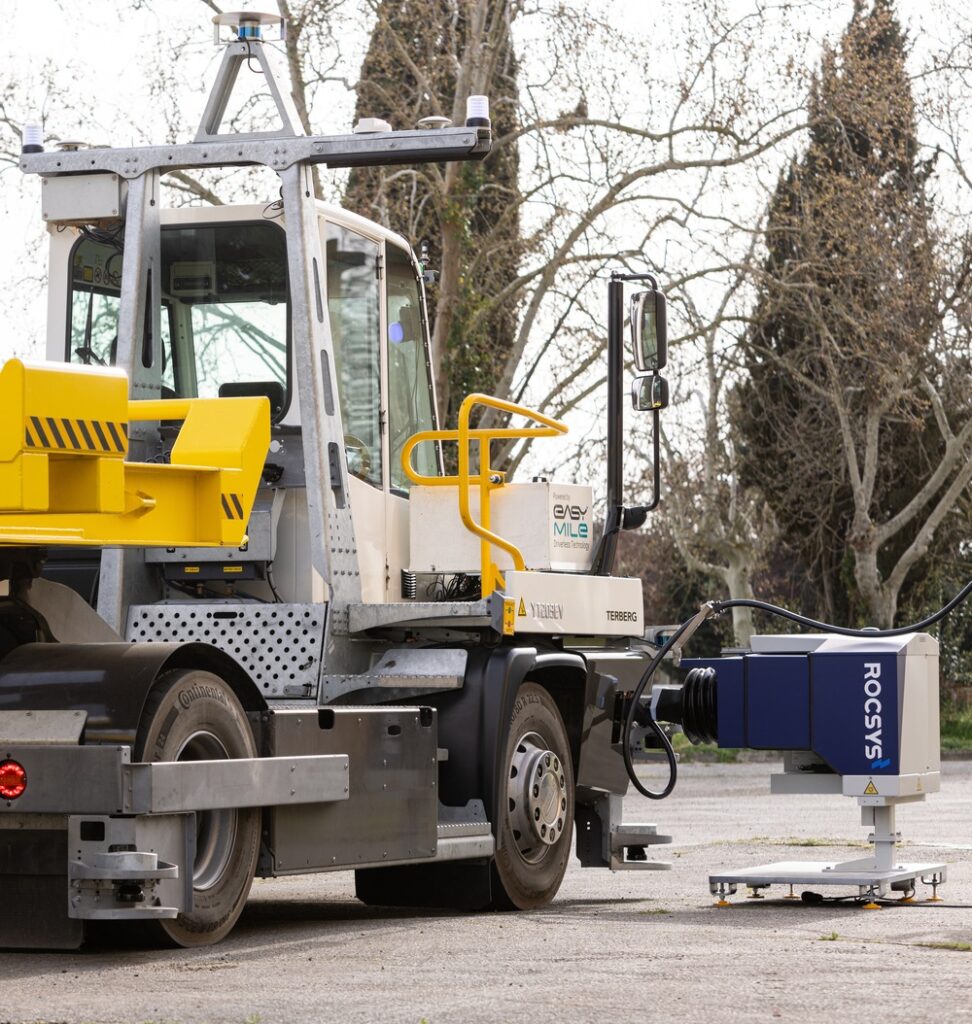
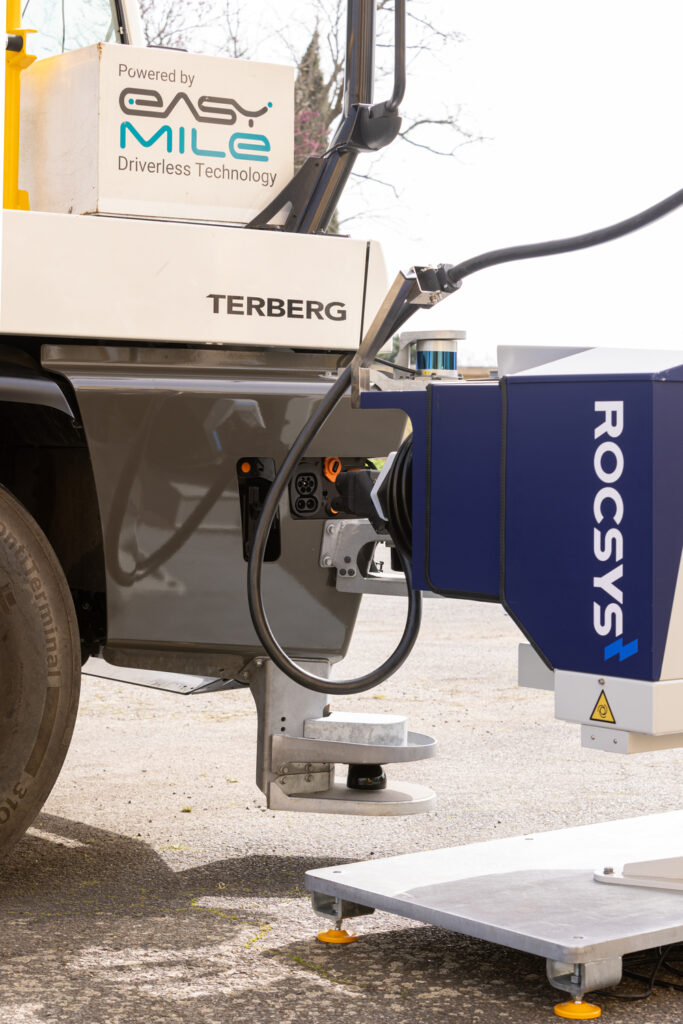
Robotaxis: Rocsys’ new niche
Beyond port logistics, Rocsys identified robo-taxis as another key sector.
Companies such as Waymo (Google), Zoox (Amazon), and Tesla are already developing autonomous mobility networks in the United States and China.
“In San Francisco, Waymo is already conducting 200,000 paid trips per week with robotaxis,” Bouman notes, highlighting the rapid growth of this sector.
Despite advancements in North America and Asia, the deployment of this technology in Europe faces regulatory challenges.
However, the United Kingdom is taking the lead with specific legislation for these vehicles, positioning itself at the forefront of adoption on the continent.
“For us, this sector represents a significant part of the company’s growth and future vision,” the CEO affirms.
As a result, over the past two years, the company also focused on the robotaxi market.
Currently, the Dutch firm serves the majority of its clients in North America and Europe but remains open to expanding into new markets.
“We have been exploring opportunities in South America, where there is interest from Chile in our port solutions,” Bouman reveals.
READ MORE
-
UK charger utilization “keeping pace” with EV growth, with no reports of unused sites
CPOs report strong growth and high charger use across the UK, with no unused sites, as infrastructure keeps pace with the expanding electric vehicle fleet.
-
Be.EV introduces new ultra-rapid EV charging tariffs from £0.39/kWh in the UK
The company launches a tiered pricing model with 24/7 discounted rates available through monthly subscriptions.
-
Transdev orders 55 Solaris electric buses for Arnhem-Nijmegen-Foodvalley concession
The fleet includes Solaris’s shortest and longest battery-electric models and will begin operation in mid-2026.





